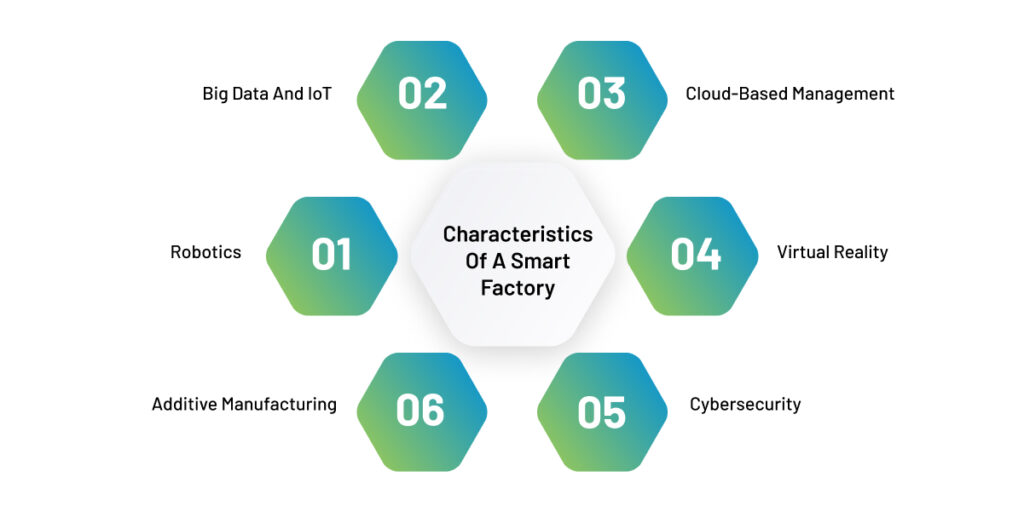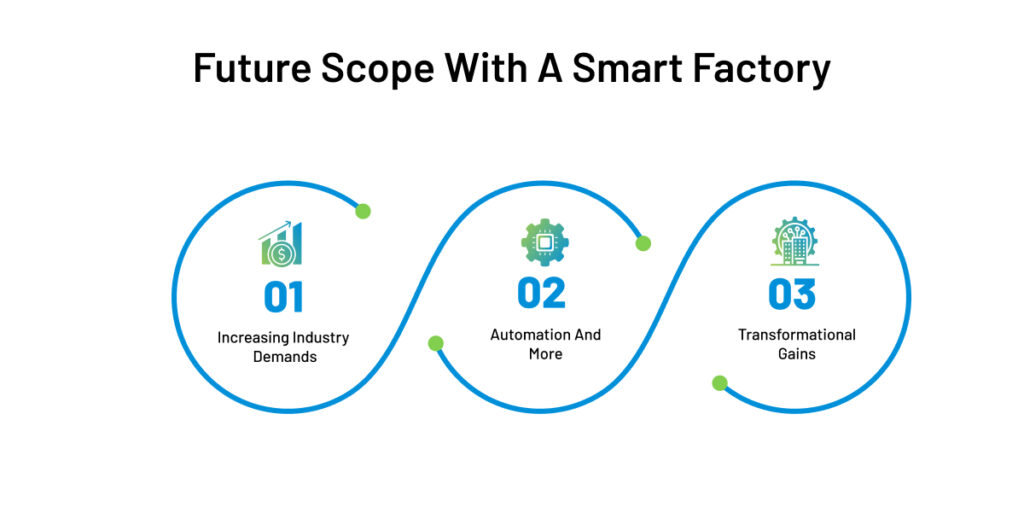The COVID-19 pandemic posed an unprecedented challenge in healthcare management worldwide, resulting in a shortage of essential medical supplies like ventilators, PPE kits, and medicines. To meet the pressing demands, several country leaders turned to the manufacturing industry for support. The crisis highlighted the urgent need to advance the manufacturing sector with the implementation of IoT solutions, diverse manufacturing ecosystems, and digital tools to facilitate collaboration and improve delivery. Smart factory initiatives can play a pivotal role in meeting such challenges in the future.
Constant consumer expectations and economic uncertainty are at an all-time high, leading to supply chain managers needing solutions that can provide measurable and significant benefits. According to Forbes magazine data, in 2017, about 43% of manufacturers had innovative factory initiatives underway. By 2018, about 68% of them did, significantly increasing.
According to the global smart manufacturing market estimation, the smart manufacturing industry was estimated at USD 97.6 billion in 2022 and is projected to reach about USD 228.3 billion by 2027. It is expected to grow exponentially at a CAGR of about 18.5% from 2022 to 2027.
Kaus Helmrich, a board member at Siemens, also credited their success to digitalization. Their rollout time of new products was cut upto 25-50 percent, whereas their engineering costs were reduced up to 30 percent through digitalization. A global McKinsey survey suggested that the growth of smart manufacturing business software solutions may be attributed to the increasing emphasis on real-time data analysis and predictive maintenance to boost the adoption of IoT and smart manufacturing.
Also, Read – How the convergence of IoT is driving Industry 4.0
This blog highlights:
- What is a Smart Factory
- How Production Ecosystems are linked to Competitiveness
- Benefits vs. Metrics
- The Key to Success through Smart Factory
- Case Studies
What is a Smart Factory?
Smart factories are highly digitized solutions that rely on data and technologies like iot solutions for manufacturing, AI, and ML to enhance the efficiency and quality of the manufacturing world. Manufacturing companies typically invest in cloud technologies, 5G, and edge computing to lay the groundwork that drives competitive advantages. Reports from Deloitte found that about 61% of manufacturing leaders are partnering with specialized companies to enhance their smart factory initiatives.

- Robotics: Robotics enable smart material handling and adaptive operations. They come with flexible infrastructure that can scale depending on business needs.
- Big data and IoT: Big data and IoT help identify patterns and insights to enable businesses to make more informed decisions to optimize operations.
- Cloud-based management: It can provide real-time visibility into a business’s inventory and help manage supply chain operations from the manufacturing to the end customer.
- Virtual reality: Manufacturers use virtual reality, which improves user experience. It trains engineers to handle complex virtual processes, maintenance systems, and troubleshooting.
- Cybersecurity: AI-powered bots guard against cybersecurity threats at all times of the day, ensuring data security.
- Additive manufacturing: Used of additive manufacturing is done for rapid prototyping and on-site manufacturing. It saves time and costs on production and tool replacements.
How Production Ecosystems are linked to Competitiveness
Manufacturing business solutions can help address COVID-19 challenges, like computer vision for virtual tours, solving the problem of going out and touring, iot solutions for manufacturing, AR/VR for training and equipment maintenance, wearable for worker safety, and cobots to maintain productivity. Around 62% of the surveyed manufacturers forge smart manufacturing investments to develop better solutions.
In 2019, a Deloitte and MAPI smart factory study report showed that a cohort of manufacturers was making great strides by adopting Industry 4.0 technologies like IoT to solve specific business problems and opportunities. This study examined how manufacturers reach outside their organization to deliberately connect with vendors and service providers to further advance their smart manufacturing journey.
- Measures key performance indicators
- Help companies think ahead and better
- Efficient demand management
- Boost productivity and more
Also, Read – Top 7 IoT Trends Driving Innovation Across Businesses In 2023
Benefits of a Smart Factory that Create an Impact on the Industry
The metrics used for client evaluation may be specific, but the benefits here are often defined as the bigger picture. The top manufacturers measure their ecosystem partners’ value using productivity and efficiency metrics. For example, the two maximum benefits surveyed manufacturers report overall from having an ecosystem of partners and alliances for small manufacturing production are – increasing the pace of product delivery and increased revenue from existing products and services, along with reducing operational costs through greater efficiencies.
According to a study from Deloitte, an intelligent factory initiative, IoT, and manufacturing business software solutions have yielded an average of 10-12% increase in labor productivity gains. However, a majority of manufacturers still need to move forward. The industry observes a 0.7% increase in labor productivity each year. Along with that, a 20% increase in labor productivity is also observed. Companies that quickly adapt to smart factories have also seen unprecedented results.
The Key to Success Through Smart Factory
Manufacturing respondents who lead with an ecosystem approach to smart manufacturing are more than twice as likely to find value through the additional connections or capabilities their partners bring. For example, manufacturers have invested in IoT in the last two years leading to factory asset intelligence, factory synchronization and dynamic scheduling, synchronized planning, connected customer and after-market, and additive manufacturing.
However, progress still needs to be made easier to achieve. Some significant benefits that ecosystems can provide are:
- A higher number of active connections
- The anticipated increase in the number of connected products over the next three years.
- More significant reduction in operational costs
- Increased digital products and services
- Increased capacity for innovation
Future Scope with A Smart Factory
Manufacturers are changing the game with the best solutions, increasing flexibility and agility. Emerging imperatives for the manufacturing industry include supply chain resilience, enhanced productivity, and sustainability. Manufacturing systems that enable a demand-drive and dynamically optimized value chain tend to survive better and thrive in these unpredictable times.

- Increasing industry demands: With the increasing scope and need for factories to regulate and be compliant, greater demands will merge with global trends toward digitization adoption. Digital technologies are at the heart of such changes and will be needed.
- Automation and more: Manufacturers are undergoing digital transformation with automation to minimize manual operations and maximize outputs. The technological advances enable manufacturers to empower their operators and understand their operational data. In addition, ng, several new-age platforms and integrational technologies drive down the cost of digital transformation, making it a go-to for the future.
- Transformational gains: Manufacturers accelerate their sustainable manufacturing vision by implementing new technologies and adapting to a smart factory. They are driven by the unrelenting need for agility and reliance; manufacturers can empower their workforce by adopting smart factories.
Case Studies
As mentioned, smart manufacturing businesses help monitor a factory’s production process. Since the central goal of these factories is to identify opportunities and use analytics to improve the process’s overall performance, there are so many cases where they helped transform the overall manufacturing process.
Black and Decker: One of the manufacturing business software solutions we wanted to highlight is the power tool manufacturer Black and Decker, which was later changed to Cisco. It provides an Internet of Things solution to increase visibility and decrease complexity in its manufacturing plant. The company deployed a real-time location system to identify tags that attach to every material nearby, making tracking effortless.
The company achieved more than the estimated 10% greater labor efficiency and better use of labor-critical resources. This tends to improve utilization rates from 80% to 90%, and improvements with first-time pass defects per million opportunities are reduced to about 16%.
Hirotec: Another major company we want to highlight is the Hirotec Group, part of the Japanese automotive industry. The company shifted to an IoT platform from Hewlett Packard Enterprise (HPE) partner PTC with HPE edge line systems. The shift helped them boost their operational technology and predictive analysis.
With advances in IoT, the company realized that adapting to Industry 4.0 was vital in adding predictive analytics and machine learning to improve its manufacturing operations by eliminating unplanned downtime. As a result, the company gained real-time visibility into its business operations, allowing it to address issues that impact its efficiency and throughput.
AW North Carolina: Another essential manufacturer of automatic transmission, AW North Caroline, also shifted to iot solutions for manufacturing and related manufacturing business from Cisco to enhance the overall efficiency of their plant. With the shift, the company highlighted that there had been zero network downtime since implementing Cisco’s new technology.
Conclusion
In conclusion, the manufacturing industry is rapidly evolving with the adoption of smart factory solutions. The industry is leveraging technologies such as IoT solutions for manufacturing, robotics, virtual reality, cloud-based management, cybersecurity, and additive manufacturing to enhance the efficiency and quality of the manufacturing process.
The global smart manufacturing market is expected to grow exponentially at a CAGR of about 18.5% from 2022 to 2027. The benefits of a smart factory include increased productivity and revenue, better efficiency, and reduced operational costs. Manufacturing businesses are partnering with specialized companies to enhance their smart factory initiatives and are investing in IoT to solve specific business problems and opportunities. The key to success is adopting an ecosystem approach to smart manufacturing, which has yielded tremendous results for manufacturers who have implemented it.
Overall, smart factory solutions are revolutionizing the manufacturing industry, and it’s time for manufacturers to embrace the future by seeking help from IoT solutions company with a proven track record of proffering the most competent IoT solutions that reciprocate business growth and impact.




